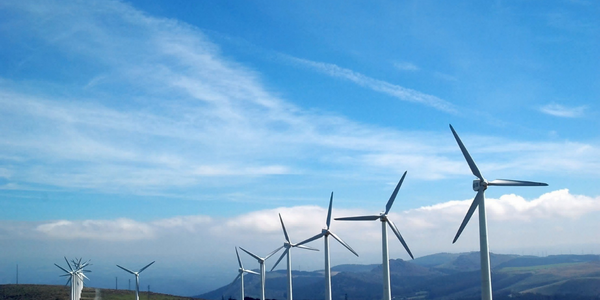Technology Category
- Cybersecurity & Privacy - Security Compliance
- Sensors - Temperature Sensors
Applicable Industries
- Cement
- Renewable Energy
Applicable Functions
- Facility Management
- Quality Assurance
Use Cases
- Construction Management
- Smart Campus
Services
- Testing & Certification
- Training
About The Customer
TYPSA Group is an engineering consultant firm based in Spain, with a global presence across five continents. For over 50 years, they have been supporting public, private, and institutional clients in delivering complex infrastructure projects. Their work spans various fields, including transport, building, water, renewable energy, and rural development. They have worked on many high-profile projects around the world, two of which received recognition at Bentley’s Year in Infrastructure Conference. These include the SEK 25.7 billion Stockholm Metro extension project and High Speed 2 (HS2), the new high-speed rail network in the United Kingdom. TYPSA Group is committed to providing better services for their clients and expanding their use of BIM methodologies.
The Challenge
TYPSA Group, a Spanish engineering consultant firm, has been assisting global clients in delivering complex infrastructure projects for over 50 years. Despite leveraging BIM workflows since 2008, these were mostly applied to smaller projects. As an organization operating across five continents, TYPSA Group recognized the need to adhere to the highest technical, sustainability, and integrity standards across all their projects. The challenge was to expand and systematize their use of BIM methodologies to demonstrate their competency and secure more contracts. To prove their commitment to BIM workflows and digital transformation, TYPSA Group aimed to receive an ISO 19650 certification. However, they needed a reliable way to ensure that all their BIM workflows were managed at the level that this certification required, and to scale this management to accommodate their array of complex, global projects. Their existing file-share platforms were not fully meeting their needs, as they faced difficulties implementing BIM standards and adhering to best practice workflows.
The Solution
In 2015, TYPSA Group collaborated with Bentley to conduct a research project analyzing various collaboration solutions. The analysis revealed that ProjectWise could help them enable faster, higher-quality collaboration, automate and make comprehensive their adherence to BIM standards and key digital workflows—without needing to expend manual, time-consuming efforts. They deployed ProjectWise on two of their largest projects: the Stockholm Metro extension and HS2. On the Stockholm Metro project, they built templates in ProjectWise to ensure that their designers adhered to consistent workflows and standards, regardless of their locations or disciplines. ProjectWise provided a connected data environment for project-wide design collaboration among Sweco, TYPSA Group, its client FUT, and contractors in stages other than design, including construction and operations. On the HS2 project, TYPSA Group worked on a connected data environment using ProjectWise to optimize project delivery and meet the client’s timelines. They were able to streamline digital workflows among the numerous engineering disciplines in accordance with the client information requirements, aligned with PAS 1192 and ISO 19650.
Operational Impact
Quantitative Benefit

Case Study missing?
Start adding your own!
Register with your work email and create a new case study profile for your business.
Related Case Studies.

Case Study
Remote Monitoring & Predictive Maintenance App for a Solar Energy System
The maintenance & tracking of various modules was an overhead for the customer due to the huge labor costs involved. Being an advanced solar solutions provider, they wanted to ensure early detection of issues and provide the best-in-class customer experience. Hence they wanted to automate the whole process.

Case Study
Vestas: Turning Climate into Capital with Big Data
Making wind a reliable source of energy depends greatly on the placement of the wind turbines used to produce electricity. Turbulence is a significant factor as it strains turbine components, making them more likely to fail. Vestas wanted to pinpoint the optimal location for wind turbines to maximize power generation and reduce energy costs.

Case Study
Siemens Wind Power
Wind provides clean, renewable energy. The core concept is simple: wind turbines spin blades to generate power. However, today's systems are anything but simple. Modern wind turbines have blades that sweep a 120 meter circle, cost more than 1 million dollars and generate multiple megawatts of power. Each turbine may include up to 1,000 sensors and actuators – integrating strain gages, bearing monitors and power conditioning technology. The turbine can control blade speed and power generation by altering the blade pitch and power extraction. Controlling the turbine is a sophisticated job requiring many cooperating processors closing high-speed loops and implementing intelligent monitoring and optimization algorithms. But the real challenge is integrating these turbines so that they work together. A wind farm may include hundreds of turbines. They are often installed in difficult-to-access locations at sea. The farm must implement a fundamentally and truly distributed control system. Like all power systems, the goal of the farm is to match generation to load. A farm with hundreds of turbines must optimize that load by balancing the loading and generation across a wide geography. Wind, of course, is dynamic. Almost every picture of a wind farm shows a calm sea and a setting sun. But things get challenging when a storm goes through the wind farm. In a storm, the control system must decide how to take energy out of gusts to generate constant power. It must intelligently balance load across many turbines. And a critical consideration is the loading and potential damage to a half-billion-dollar installed asset. This is no environment for a slow or undependable control system. Reliability and performance are crucial.

Case Study
System 800xA at Indian Cement Plants
Chettinad Cement recognized that further efficiencies could be achieved in its cement manufacturing process. It looked to investing in comprehensive operational and control technologies to manage and derive productivity and energy efficiency gains from the assets on Line 2, their second plant in India.

Case Study
Remote Monitoring and Control for a Windmill Generator
As concerns over global warming continue to grow, green technologies are becoming increasingly popular. Wind turbine companies provide an excellent alternative to burning fossil fuels by harnessing kinetic energy from the wind and converting it into electricity. A typical wind farm may include over 80 wind turbines so efficient and reliable networks to manage and control these installations are imperative. Each wind turbine includes a generator and a variety of serial components such as a water cooler, high voltage transformer, ultrasonic wind sensors, yaw gear, blade bearing, pitch cylinder, and hub controller. All of these components are controlled by a PLC and communicate with the ground host. Due to the total integration of these devices into an Ethernet network, one of our customers in the wind turbine industry needed a serial-to-Ethernet solution that can operate reliably for years without interruption.

Case Study
Temperature monitoring for vaccine fridges
Dulas wanted a way to improve the reliability of the cold chain, facilitating maintenance and ensuring fewer vaccines are spoiled. Dulas wanted an M2M solution which would enable them to record and report the temperature inside vaccine refrigerators.







